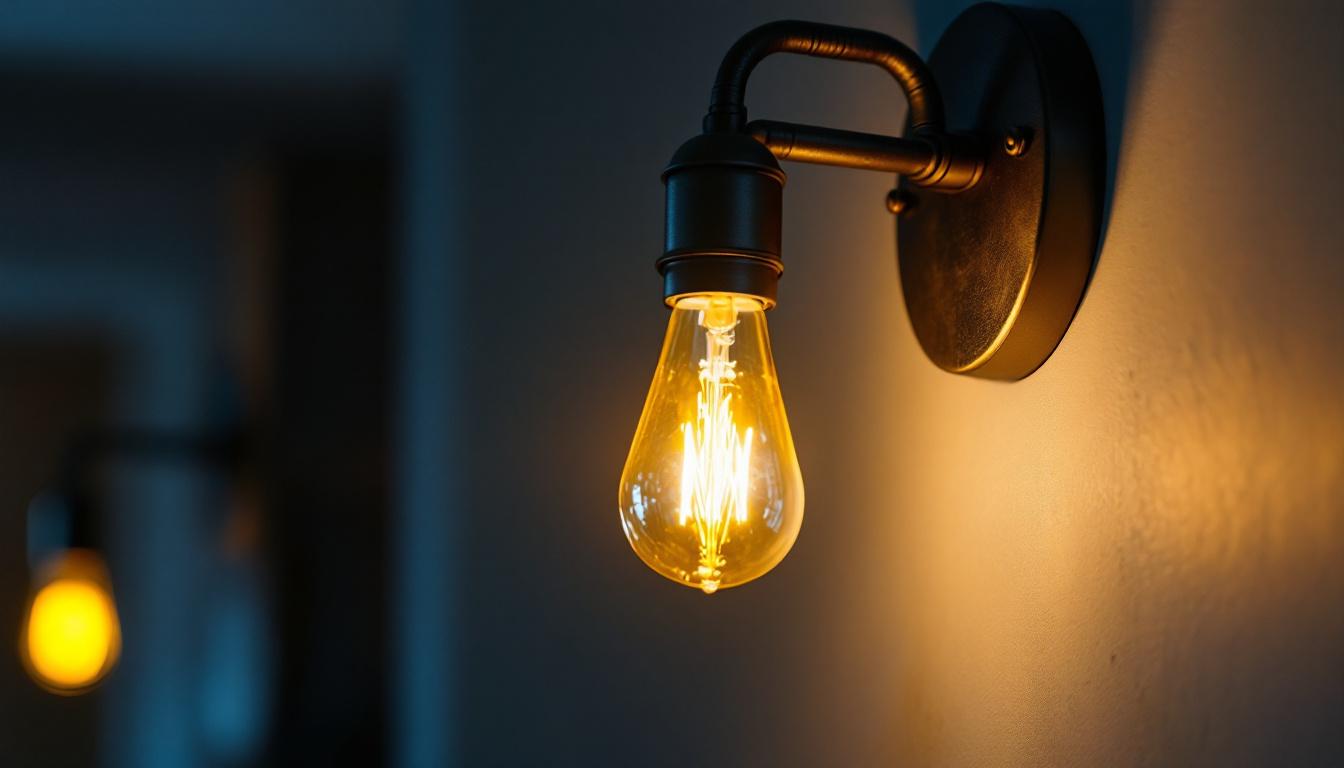
Fluorescent lighting has long been a staple in both commercial and residential settings. For lighting contractors, understanding the intricacies of fluorescent systems is essential for delivering high-quality installations and ensuring client satisfaction. This article delves into the nuances of fluorescent lighting, offering practical tips and insights that can enhance the efficiency and effectiveness of lighting projects.
Fluorescent lighting operates on a principle that differs significantly from traditional incandescent bulbs. By using a gas-filled tube and a phosphor coating, these lights produce a bright and energy-efficient glow. For contractors, having a solid grasp of how these systems work is crucial for troubleshooting and installation. The technology behind fluorescent lighting not only contributes to energy savings but also plays a significant role in reducing carbon footprints, making it an environmentally friendly choice for both residential and commercial applications.
Fluorescent lighting systems consist of several key components, including the lamp, ballast, and fixture. Each part plays a vital role in the overall functionality of the lighting system. The lamp is the visible part that emits light, while the ballast regulates the current to the lamp, ensuring it operates efficiently. Understanding these components allows contractors to make informed decisions during installations and repairs. Additionally, the fixture, which houses the lamp and ballast, can vary in design and functionality, influencing the distribution of light and the overall aesthetic of a space. Proper selection and installation of fixtures can enhance not only the lighting quality but also the ambiance of the environment.
There are various types of fluorescent lamps available, including T8, T5, and compact fluorescent lamps (CFLs). Each type has its unique characteristics and applications. For instance, T8 lamps are commonly used in commercial settings due to their efficiency and longevity, while CFLs are often favored for residential use due to their compact size and energy-saving features. Familiarity with these types can help contractors recommend the best options to their clients. Furthermore, advancements in fluorescent technology have led to the development of high-output and low-profile options, which cater to specific needs such as high ceilings or tight spaces. Understanding these nuances can empower contractors to provide tailored solutions that meet the diverse requirements of their clientele, ensuring optimal performance and satisfaction in every installation. Additionally, the integration of electronic ballasts has further improved the efficiency and flicker-free operation of fluorescent lighting, making it an even more appealing choice for modern applications.
Proper installation is paramount for maximizing the performance of fluorescent lighting systems. By adhering to best practices, lighting contractors can ensure that installations are not only efficient but also safe and compliant with regulations.
Before beginning any installation, it is crucial to prepare the site adequately. This includes assessing the existing electrical infrastructure and ensuring that it meets the requirements for the new fluorescent lighting system. Additionally, contractors should take the time to plan the layout of the fixtures to optimize light distribution and minimize shadows. Consideration should also be given to the specific needs of the space; for instance, areas requiring higher illumination levels, such as workshops or retail spaces, may benefit from a different fixture arrangement compared to more subdued environments like offices or waiting rooms. Furthermore, ensuring that the installation site is clean and free of debris can prevent potential accidents and facilitate a smoother workflow.
When it comes to wiring, safety should always be the top priority. Contractors should ensure that all connections are secure and that the correct gauge of wire is used. It is also important to follow local electrical codes and guidelines to avoid any potential hazards. Using proper connectors and ensuring that all components are compatible will lead to a more reliable installation. Additionally, it is advisable to implement a systematic approach to labeling wires and circuits during installation. This practice not only aids in troubleshooting and maintenance down the line but also enhances safety by making it easier to identify circuits during future modifications or repairs. Moreover, utilizing surge protectors can safeguard the fluorescent lighting system from voltage spikes, thereby extending the lifespan of the fixtures and maintaining consistent performance.
Even the best-installed fluorescent lighting systems require regular maintenance to ensure optimal performance. Understanding common issues and their solutions can save contractors time and enhance client satisfaction. Regular check-ups can also help identify potential problems before they escalate, ensuring that clients enjoy uninterrupted service and consistent lighting quality.
Some common problems associated with fluorescent lighting include flickering, dimming, and complete failure. Flickering can often be attributed to a faulty ballast or poor connections, while dimming may indicate that the lamp is nearing the end of its life. Recognizing these issues early can prevent more significant problems down the line. Additionally, unexpected buzzing sounds can signal a need for immediate attention, as they may stem from electrical issues or a malfunctioning ballast. Understanding these symptoms can empower contractors to act swiftly, thereby maintaining the integrity of the lighting system.
Regular maintenance should include cleaning fixtures and replacing lamps as needed. Dust and debris can accumulate on fixtures, reducing light output and efficiency. Additionally, contractors should encourage clients to adopt a maintenance schedule to ensure that their fluorescent lighting systems remain in peak condition. This schedule could include periodic inspections, where contractors check for signs of wear and tear, and test the functionality of the ballasts. Furthermore, educating clients about the importance of using high-quality replacement lamps can enhance the longevity of their lighting systems, as inferior products may lead to more frequent failures and increased maintenance costs.
Another essential aspect of maintenance involves monitoring the environmental conditions where the lighting is installed. For instance, areas with high humidity or extreme temperatures can impact the performance and lifespan of fluorescent lamps. Contractors should advise clients on the best practices for controlling these factors, such as using weatherproof fixtures in outdoor settings or ensuring proper ventilation in enclosed spaces. By taking these additional steps, contractors can help clients achieve a more reliable and efficient lighting system that meets their specific needs.
As energy efficiency becomes increasingly important, fluorescent lighting offers a sustainable alternative to traditional incandescent bulbs. For lighting contractors, promoting the energy-saving benefits of fluorescent systems can be a selling point for clients. In addition to their energy efficiency, fluorescent lights have a longer lifespan, which means fewer replacements over time and reduced waste in landfills. This longevity not only contributes to environmental sustainability but also provides clients with a more cost-effective lighting solution in the long run.
Fluorescent lamps are typically rated for their energy efficiency, often expressed in lumens per watt. Understanding these ratings allows contractors to recommend the most efficient options to clients, helping them reduce energy costs while maintaining adequate lighting levels. Educating clients about the long-term savings associated with energy-efficient lighting can also enhance customer relationships. Furthermore, contractors can explain how the adoption of energy-efficient lighting can contribute to LEED certification for commercial buildings, which is increasingly sought after in the construction industry. This knowledge positions contractors as experts in sustainable practices, further solidifying their reputation in the market.
Fluorescent lamps contain small amounts of mercury, making proper disposal essential. Contractors should be well-versed in local regulations regarding the recycling and disposal of fluorescent lamps. By offering guidance on responsible disposal methods, contractors can further demonstrate their commitment to sustainability. Additionally, many communities have established recycling programs specifically for fluorescent bulbs, allowing clients to participate in environmentally friendly practices. Educating clients about these options not only helps them comply with regulations but also fosters a sense of responsibility towards environmental stewardship. This proactive approach can lead to increased customer loyalty and referrals, as clients appreciate the contractor’s dedication to both their needs and the planet.
The lighting industry is continually evolving, with innovations that enhance the performance and application of fluorescent lighting. Staying informed about these advancements can provide contractors with a competitive edge.
With the rise of smart technology, integrating fluorescent lighting with smart systems is becoming more common. This includes the use of sensors and controls that allow for automated adjustments based on occupancy or natural light levels. Contractors who understand these technologies can offer clients modern solutions that improve energy efficiency and convenience.
While fluorescent lighting remains popular, LED technology is rapidly gaining traction due to its superior energy efficiency and longevity. Contractors should be aware of the benefits and limitations of both fluorescent and LED options to provide clients with informed recommendations. Understanding when to suggest LED alternatives can help contractors meet diverse client needs.
Effective communication with clients is vital for successful projects. Educating clients about fluorescent lighting systems can enhance their understanding and appreciation of the work being done.
When discussing fluorescent lighting, it is essential to highlight its benefits, such as energy efficiency, longevity, and cost savings. Providing clients with clear, concise information can help them make informed decisions and feel more confident in their choices.
Clients may have concerns regarding the quality of light produced by fluorescent systems or the presence of flickering. Addressing these concerns openly and providing solutions can build trust and strengthen client relationships. Offering demonstrations or providing samples can also help alleviate any apprehensions.
Fluorescent lighting remains a vital component of modern lighting design, and for lighting contractors, mastering its intricacies is essential for success. By understanding the technology, adhering to best practices, and staying informed about innovations, contractors can deliver exceptional results that meet client needs. With a focus on energy efficiency and sustainability, the future of fluorescent lighting looks bright, and those who adapt will thrive in this ever-evolving industry.
Ready to elevate your lighting installations with the best in fluorescent technology? Look no further than LumenWholesale, where we provide lighting contractors with high-quality, spec-grade lighting products at unbeatable wholesale prices. Say goodbye to local distributor markups and hello to our extensive selection that meets the highest industry standards. With LumenWholesale, you can count on reliable, high-performance lighting for every project. Plus, enjoy the convenience of bulk buying with free shipping, ensuring you get premium lighting at the best value — without hidden fees or compromises. Don’t miss out on the perfect blend of quality, affordability, and convenience. Wholesale Lighting at the Best Value is just a click away!

Discover how wholesale lighting supply can transform the success of lighting contractors by offering cost-effective solutions, diverse product ranges, and streamlined operations.

Discover the must-know details about sconce light bulbs that every lighting contractor should master.

Discover how ceiling fan control switches are revolutionizing the lighting industry, offering lighting contractors a competitive edge.

Discover why electrical exterior boxes are crucial for lighting contractors in ensuring safe, efficient, and durable outdoor lighting installations.